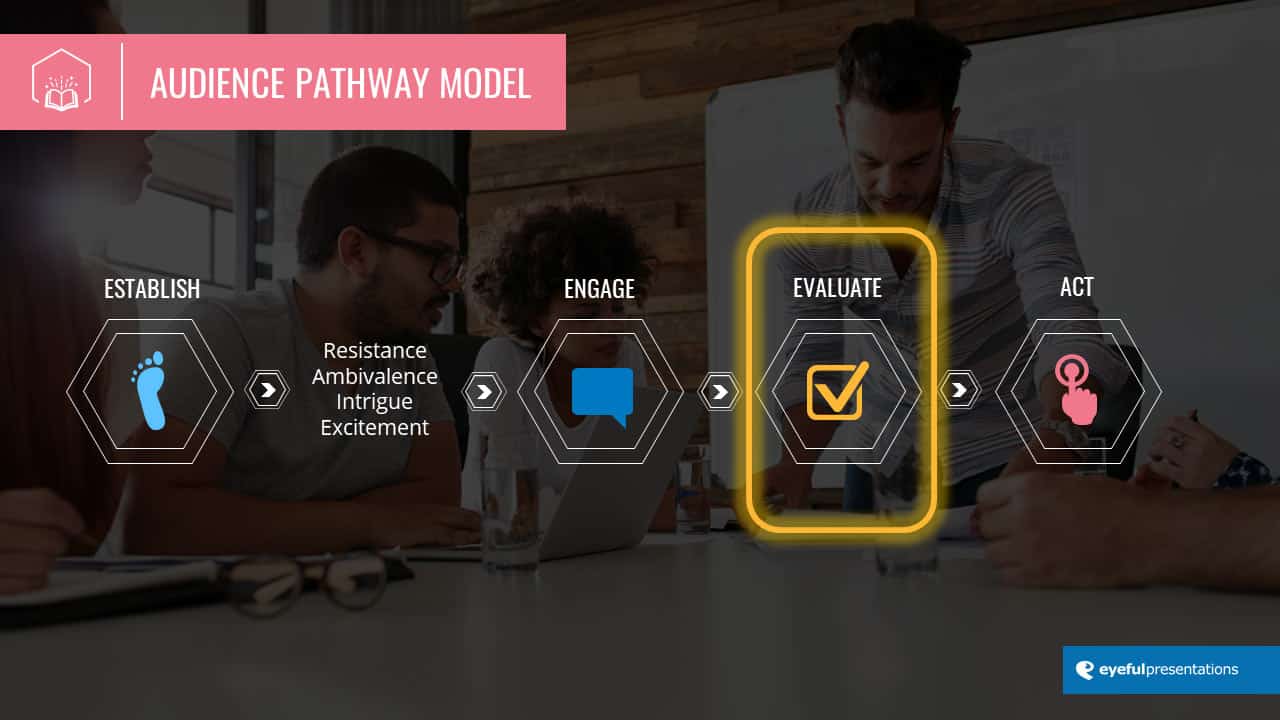David Brent: “Tell me about yourself.”
Interviewee: “I did GCSEs and A-levels….”
David Brent: “Too boring. Tell me about YOURSELF.”
Being put on the spot is tricky. You’re often left waiting for a sign to show you when to start talking and what you should be talking about. Understandably, people tend to panic in this situation, dive straight into the details, and keep talking. They’ll free fall into ‘oversharing’ mode to look credible, but in reality, their credibility crumbles, and they’re on the back foot before things have really started.
Networking events. After work drinks. First day at a new school. We’ve all been there.
So what are the tell-tell signs of this kind of clumsiness in the world of the business presentation? Easy – kicking off your presentation with a volley of the following:
- Global reach (typically a map with strategically placed dots)
- EBITDA
- Pictures of immaculately dressed employees with years of service
- Core values/mission statements/vision straplines
- Now while there is a convincing argument to keep at least some of this information in, it’s rare that it makes sense to START with it.
So why do so many business presentations start this way?
Well, firstly, let’s be kind. It’s likely seen as a comfort blanket and a safe start for many presenters. Marketing teams typically sweat over their slides, ensuring that people know as much as possible about their company. As such, it makes complete sense that presenters would want to show off these works of art. Moreover, it’s an easy ‘on-ramp’ to the rest of the presentation for many.
We get it, but go back to basics – does it meet the needs of your audience? The fatal flaw is thinking that your audience is as interested in this stuff as you are.
Remember, we live in a world where information on your company, from turnover to analyst reports and customer reviews, is no more than a few clicks away. The same goes for you, the presenter (LinkedIn at an absolute minimum). The chances are that your audience will have done at least a little bit of research on you before the meeting, right? So it’s fair to assume that they’re giving up their precious time to learn how you can help them address their specific challenges, not just hear more of your corporate story.
THE PRESENTATION IS ABOUT THEM. NOT YOU. THEM.
Presentation success hinges on ‘audience-centricity’. You need to speak to the challenges and problems they are looking for answers to. That can mean being brave and not even mentioning your company for the opening 10 minutes. Scary but oh-so-effective.
So, what does ‘good’ look like?
This is where you can embrace the remarkable power of presentation storytelling.
For example, our Audience Pathway model recommends leaving the me-me-me bit’ of the presentation towards the end. The credibility build happens by demonstrating your knowledge and empathy for the audience’s challenges, so by the time you get to talk about yourself, it’s in the context of someone who has ‘been there and got the t-shirt’.
It’s about confirmation rather than feverishly oversharing information, hoping that some of it might stick.
YOU’VE GOT TO EARN THE RIGHT TO TALK ABOUT YOURSELF.
Talking about yourself is inevitable – frankly, it’s essential – in a sales presentation. Where you choose to put it is the tricky bit.
Learn more about our approach to storytelling and how it can unlock the power of your sales presentations by following this link.




